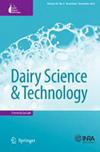南非农场手工奶酪制作的经济可行性、效益和挑战
Q2 Agricultural and Biological Sciences
引用次数: 2
摘要
关于手工奶酪制作的信息有限,无法帮助企业家评估商业机会并做出现实的商业决策。本研究的目的是评估农场手工奶酪制作的经济可行性、效益和挑战。设计了一个模型来评估在四个不同的小农农场加工硬佩科里诺奶酪和软新鲜乳清干酪的经济可行性。该研究假设了一个小型家庭企业,平均牧群规模为10头哺乳奶牛,每天使用80升生奶制作奶酪。预计现金流量表用于确定奶酪制作的经济可行性。使用10%的因子进行敏感性分析,以确定通过改变牛奶量、奶酪销售价格和两者来确定净现金流量的变化。在进行敏感性分析后,四个农场的正预期现金流量为$24,073.84至$33,783.5。四个养殖场的盈亏平衡数量为每年325.82公斤至357.88公斤。总体而言,结果表明,在给定的模型假设下,手工奶酪制作在经济上是可行的。然而,指出的主要挑战是,大多数农民缺乏关于奶酪制作的加工技术、市场机会和生产成本方面的知识。在考虑将奶酪制作作为一项业务时,小规模牛奶生产商获得这些信息至关重要。本文章由计算机程序翻译,如有差异,请以英文原文为准。
Economic Feasibility, Benefits and Challenges of On-Farm Artisanal Cheese Making in South Africa
There is limited information regarding artisanal cheese making that can help entrepreneurs evaluate business opportunities and make realistic business decisions. The objective of this study was to assess the economic feasibility, benefits and challenges of on-farm artisanal cheese making. A model was designed to evaluate the economic feasibility of processing hard pecorino-style cheese and soft fresh ricotta on four different smallholder farms. The study assumed a small-scale family-owned business with an average herd size of 10 lactating cows, using 80 L of raw milk a day to make cheese. Projected Cash Flow Statement was used to determine the economic feasibility of cheese making. Sensitivity analysis was conducted using a factor of 10% to determine the changes in net cash flows by varying the milk volume, cheese selling price and both. The positive projected cash flow after the sensitivity analysis for the four farms ranged from $24,073.84 to $33,783.5. The breakeven quantity for the four farms ranged from 325.82 kg to 357.88 kg per year.Overall, the results show that artisanal cheese making is economically viable under the given model assumptions. However, the major challenge noted is that most farmers lack knowledge in terms of the processing techniques, market opportunities and production costs involved in cheese making. Access to this information by small-scale milk producers is vital in considering cheese making as a business.
求助全文
通过发布文献求助,成功后即可免费获取论文全文。
去求助
来源期刊

Dairy Science & Technology
农林科学-食品科技
CiteScore
2.30
自引率
0.00%
发文量
0
审稿时长
2 months
期刊介绍:
Information not localized
 求助内容:
求助内容: 应助结果提醒方式:
应助结果提醒方式:


